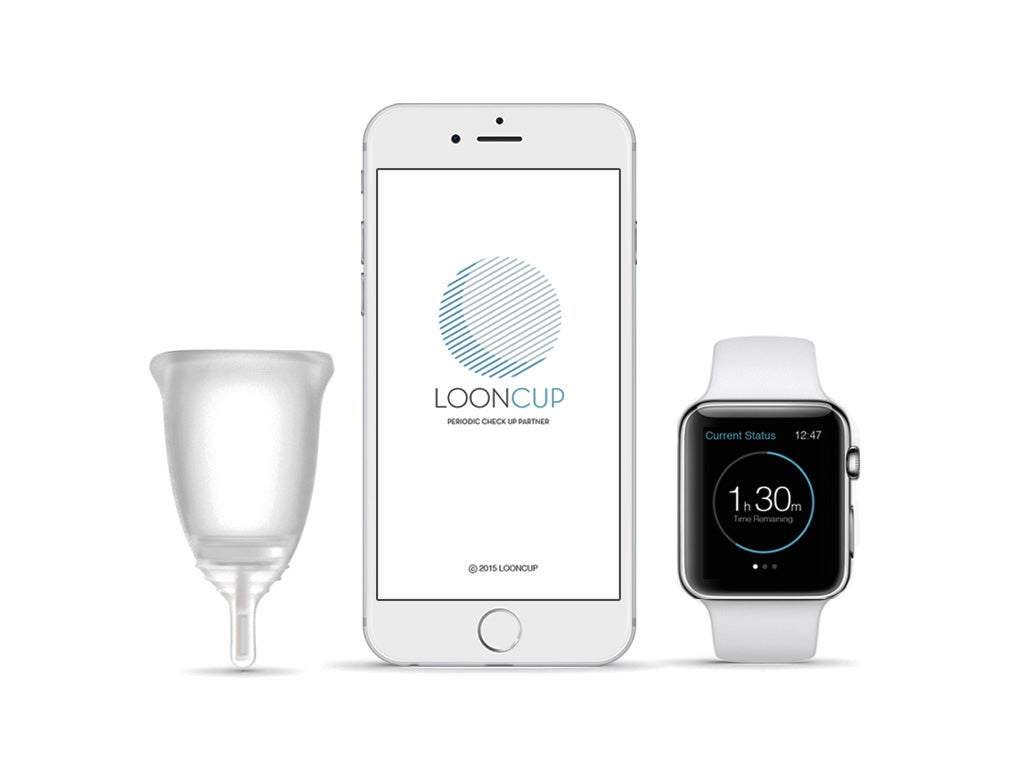Can the Looncup improve women's periods?
Pads are bulky, tampons come with the risk of toxic shock syndrome, and some women can fear leaks with menstrual cups. So what is the new smart product offering as an alternative?

When it comes to menstruation, knowledge is power, and the latest innovation in wearable tech is set to give users all the info they could ever need about their periods. The “Looncup” is a new kind of smart menstrual cup that will alert women when their period is due, what colour their period is, how much they’ve bled that day and, most importantly, when they need to empty their cup.
The internet has had mixed reactions to the Looncup, with some commenters asking if women really need all this information and suggesting that this is faddy tech at its worst. Despite these criticisms, Loon Lab Inc (the company behind the Looncup) have already surpassed their funding target on Kickstarter. Which is hardly surprising when we consider how popular period tracking already is.
The last five years have seen an increasing number of women using apps to keep an eye on their menstrual and ovulation cycles, track hormone surges, food cravings and even work out the best time to conduct a breast exam. The more we know about our cycles the better we can understand our bodies and be confident in raising any issues with our doctors; the Looncup is a logical extension of this thirst for knowledge.
Some doctors have raised concerns about the lack of research into Loon Lab Inc’s technology. Dr Jennifer Gunter, a US-based Gynecologist, queried the lack of data available on the potential side effect “of having a bluetooth device inserted vaginally for hours at a time potentially for several days a month”. A wince-inducing statement which would stop even the most ardent period-tracker in her tracks. While I personally will be waiting for more long term studies (and reassurance from my doctor) before investing in a Looncup, it’s hard to ignore the product’s potential to make up for the deficiencies of other sanitary products currently on the market.
Pads are often dismissed as bulky, impractical and slightly nappy-like but they are also the only option available to women who suffer from vaginismus (painful contraction of the vagina muscles in response to pressure), vaginal dryness or just an aversion to shoving a dry wodge of cotton up themselves for a few days every month.
Dry pads and tampons may sound like a minor inconvenience but they can actually lead to severe health issues like Toxic Shock Syndrome. Pads and tampons both contain chemicals that can increase vaginal dryness and lead to small tears in women’s skin that can in turn become infected.
Setting aside the dryness issue: tampons are fairly discreet in comparison to pads and they’re a lot easier to wear while exercising. But they still require changing far more regularly than a cup with most women needing a new tampon or pad every 3-4 hours vs up to 12 hours with a cup. Bleach-free options do exist, including (menstrual sponges, reusable sanitary towels and bleach-free tampons) but the uptake has been slow, mainly due to the fact that most of them are only available online and require extensive, intricate, cleaning. Which are just some of the reasons that many women switch to chemical and false odour-free cups.
There is also the cost to consider: both environmental and monetary. Pads and tampons create a massive amount of landfill (UK women are estimated to use over 1billion disposable sanitary products every year) and because we live in a farcical world they are still viewed as luxuries and taxed. Cups are taxed as well, but you only have to buy one a year (a decent cup costs around £12-20 and Looncups are currently £20 including shipping). A recent poll found that UK women spend on average £12 a month and £18,000 in a lifetime on their periods.
If I’m making it sound like cups are cheaper, healthier, longer lasting, more discreet and more environmentally friendly than pads and tampons, it’s because they are. But they are also intimidating for first time users: something the Looncup may be about to change.
It takes most cup users a couple of cycles to really work out how to feel comfortable while using a cup. The issue of leaks is especially pressing and many women miss the shove in and go nature of tampons. By reporting back on how full it is the Looncup will be able to reassure women that they’re not about to spring a leak. The other issue many first time users have with cups is cramping, which is usually down to the body getting used to a foreign object (in a similar way to first time tampon users), but there are other factors that the Looncup will be able to help women control. According to WebMD the colour of a user’s period can flag up dehydration, miscarriage and fluctuating hormones levels: all of which contribute to cramps.
It may be that the Looncup won’t dramatically improve our lives and cycles. Wearable tech is in its infancy and the real test will be when the cups are released in January 2016. The Looncup developers have claimed that the technology involved is perfectly safe but many women will feel squeamish about having a battery in their vagina. Until Loon Lab Inc explain the tests they conducted to ensure user safety many of us will feel uneasy about using this device. For now, however, let's keep talking about ways to make menstruation easier, cheaper and more empowering for everyone involved.
Subscribe to Independent Premium to bookmark this article
Want to bookmark your favourite articles and stories to read or reference later? Start your Independent Premium subscription today.

Join our commenting forum
Join thought-provoking conversations, follow other Independent readers and see their replies